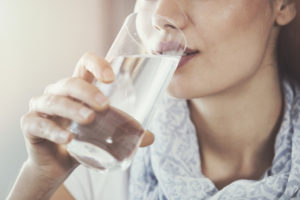Surgical and non-surgical treatments for incontinence
Urinary incontinence is the involuntary loss of urine through leakage or wetting accidents. While millions of individuals suffer leakage, there are many treatments for urinary incontinence available. The most appropriate option will be determined after a review of symptoms and accurate diagnosis.
Treatments for urinary incontinence
Behavior modification
A conservative approach to treating incontinence is by the adjustment of fluid intake. This can include eliminating bladder irritants such as:
- Alcohol.
- Caffeine products such as coffee and tea.
- Carbonated beverages such as soda.
- Drinks high in sugar.
- Cranberry juice – While cranberry juice may help with urinary tract infections, it is also a bladder irritant can worsen incontinence symptoms.
Water is a great choice for staying hydrated and flushing the kidneys and bladder. However, incontinence patients should not over hydrate. In fact, limiting fluid intake is a good way to manage urination. It is recommended that patients cut their intake to just over six cups a liquid each day. Additionally, fluid intake should stop after dinner and prior to bedtime to avoid frequent urination during the night. Foods that irritate the bladder should also be avoided. This includes spicy foods and those that are high in sugar. Substitute sweeteners should also be avoided.
Bladder retraining is another conservative method to help manage incontinence. When individuals feel the urge to urinate, they should attempt to hold the urine for a few minutes before voiding. The goal is to be able to hold the urine for longer periods of time without having an accident. Another recommendation is double voiding. This is generally practiced before bedtime. After urination, wait a few minutes and try to urinate again without straining. The goal is to empty the bladder as much as possible for retiring.
Additional behavior modifications include smoking cessation, and maintaining a healthy weight. Smoking is a known bladder irritant, and excess weight will bear down on the bladder which contributes to incontinence.
Pelvic floor retraining
For individuals with weak pelvic floor muscles, strengthening these muscles will enable better control of incontinence symptoms. Pelvic floor rehabilitation and Kegel exercises are ideal for strengthening pelvic floor muscles.
Medications
When more conservative methods fail, there are several medications that can be prescribed. However, medication is not recommended for stress incontinence in which a stressor triggers the release of urine.
Insertable devices
In some cases, urinary leakage is caused by prolapsed organs that are putting pressure on the bladder. A pessary device can be placed inside inside the vagina to support pelvic organs that have fallen (prolapsed). Pessaries are temporary devices that are used to address problems with pelvic prolapse which may accompany bladder symptoms.
Bulking agents
Using a cystoscope, a bulking agent is injected into the urethra to coapt (bring close together) the urethra and increase resistance. Injecting a bulking agent is an outpatient surgery.
Midurethral sling
This surgical procedure is done through a small vaginal incision. After the incision, a thin mesh is placed along the urethra, which acts as a support “hammock”. This sling is held in place by positioning the mesh ‘arms’ into strong tissues of the pelvis. It is further supported by the body’s own healing response and integration of collagen. This is an outpatient surgery with a recovery time of approximately two to four weeks.
Urinary Tract Reconstruction
Patients with severe bladder dysfunction caused by neurologic disease or spinal cord injury may benefit from tailored urinary tract reconstruction to facilitate urine storage, bladder emptying, or urinary diversion.
If you are experiencing the bothersome symptoms of urinary incontinence, contact Urology Austin to schedule an evaluation with one of our providers.

